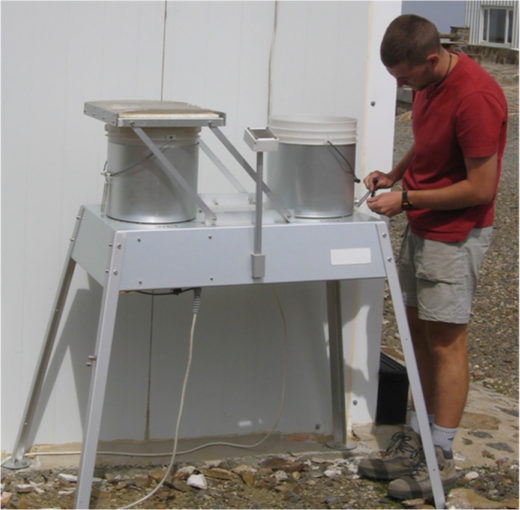Every week for two years, Professor Isabel Reche’s team from the Universidad de Granada in Spain ventured high into the Sierra Nevada Mountains, but it wasn’t for their love of the great outdoors. Instead, they were taking samples, and what they found may have you reaching for an umbrella.
The results from the collaborative study, which also included researchers from the University of British Columbia, show that billions of viruses are falling from the sky every day – even in the pristine mountain air 3,000 metres above sea level.
“When you talk about a billion viruses per square meter per day, that’s pretty amazing actually,” says Curtis Suttle, Professor in the Department of Earth, Ocean and Atmospheric Sciences at UBC and co-author of the study.
Over 10 years ago, Suttle was investigating genetic diversity in viral populations around the world. What he discovered instead, was that identical viruses could be found in drastically different environments, from an Arctic meltwater pond to the Gulf of Mexico to a lake in Germany.
“Viruses are obligatory pathogens, meaning they depend on a host organism for survival and they’re very specific about which organism they infect,” explains Suttle. “It’s unlikely that the same host organisms would survive in such different environments.”
The only other explanation that made sense to Suttle was that the viruses were somehow migrating huge distances from their host organism’s natural environment, to others all around the Earth. But they could only do that if they managed to get up past the atmospheric boundary layer, where Earth’s weather systems and human activity no longer limit long-range transport.
So Suttle teamed up with Reche and installed two collectors in the Sierra Nevada Mountains: one at the Astrophysics Observatory of Sierra Nevada and one near Veleta peak, both well above the atmospheric boundary. Over the next two years, they collected samples and modelled the origin of air masses, to determine how many viruses travelled to each site and where they came from. Results were published last month in the International Society for Microbial Ecology Journal.

According to the study, viruses attached to dust particles from the Saharan desert or droplets of sea spray from the Atlantic Ocean are propelled into the atmosphere and deposited by the billions at the collector sites, and eventually, at the Earth’s surface.
Viruses have been given a bad rap; you’re likely only familiar with the ones that make you sick, like the flu (influenza virus), chickenpox (varicella-zoster virus), or HIV (human immunodeficiency virus). But most existing viruses actually infect bacteria, not humans. If they didn’t, we’d likely be sick all the time.
“Every time we go outside we’re inhaling millions and millions of viruses,” laughs Suttle. “Just going for a swim we’re probably swallowing as many viruses as there are people in Canada.”
Rather than being a burden, viruses are actually a critical part of the ecosystem, keeping microbial populations in check and releasing nutrients into their surroundings. Viruses in our lungs have even been postulated to act as a first line of defense against bacterial invaders.
The fact that viruses are able to travel all over the globe may be yet another way they help keep the planet in balance. This way each region has a bank of viral subtypes that should allow ecosystems to rapidly adapt to environmental changes.
“There’s really been a paradigm shift,” says Suttle. “We’re seeing how crucial viruses are in the ecosystem.”
So although thinking about all those invisible viruses floating down may make you shudder, it could be for the greater good.








































